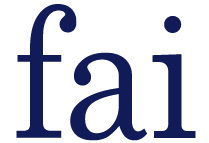by Dave Grace and Elisabeth Rhyne
During the economic slowdown in response to the novel coronavirus, the position of financial institutions is in some ways analogous to that of medical workers fighting the virus—without the health risk. Financial institutions have a duty to help their clients, even though doing so exposes them to increased risk. This is especially true for microfinance institutions, financial cooperatives and other bankers who serve lower income and vulnerable people. For these providers, taking steps to help customers like forgiving loans or offering payment holidays potentially threatens their own survival. Financial institutions are asked to support their small business and household customers through this unprecedented situation, even while their own solvency is challenged. . . .
The Latest from the Hidden Lives of America's Poor and Middle Class
Thanks to the generosity of the Citi Foundation, the US Financial Diaries launched a blog and webinar series in partnership with Stanford Social Innovation Review. The series looks at the financial lives of working Americans and offer new insights for designing policies, programs, and products that can better meet their needs. Over the past month, there have been a number of exciting updates in the series... . . .
Read MoreWSJ: Financial Inclusion in Asia and Microcredit's Impact
This week, The Wall Street Journal featured a pair of articles on current issues in microfinance. The first highlights the varied strategies governments across Asia are employing to promote financial inclusion, including mobile technologies and India's policy of universal bank accounts. However, some are concerned about the $80 overdraft feature of these accounts, and liken the potential risk of indebtedness to the past failures of microfinance. FAI's Executive Director Jonathan Morduch notes that indeed, microfinance's impact on poverty alleviation to date has been "disappointing" . . . . . .
Read MoreMobile-izing People in Bangladesh
This post written by Shamsin Ahmed and Kazi Amit Imran . . .
Bill and Melinda Gates’ 2015 annual letter bets that over the next 15 years mobile banking will have a transformational effect on the lives of the poor. In Bangladesh, about 70% of the population is unbanked, yet an equivalent percentage of the population—not necessarily the same people though—has access to mobile phones. Put two and two together and mobile money is a no-brainer from our perspective. . . .
Since the launch of the first mobile money product in 2011, mobile banking has been made possible in part by the efforts of the government’s mandate to create a ‘Digital Bangladesh’, and the subsequent policy support from the Central Bank to promote the growth of the mobile finance industry . . . . . .
Read MoreNew 2014 State of the Industry Report on Mobile Financial Services for the Unbanked
Today, the GSMA Mobile Money for the Unbanked (MMU) programme releases its 2014 State of the Industry Report on mobile financial services. Published annually, the report provides industry practitioners with insights into the important developments taking place in mobile money, mobile insurance, mobile savings and mobile credit. . . .
The mobile financial services sector continued to expand in 2014, boosted by the creation of more enabling regulatory frameworks in several markets. With 255 mobile money services in operation across 89 countries, mobile money services are now available in over 60% of developing markets. Today, mobile financial services are firmly established in the financial sectors of the majority of the developing world, serving new business areas and enabling a wider range of digital payments . . . . . .
Read MoreFinancial Access 101: Savings Outside of Groups
In the past, we've talked about what savings groups are and how they work as an effective tool to help poor families build savings and better manage their financial lives. In our latest installment in this series, we explore the idea of incorporating the mechanisms that make savings groups work in products and contexts outside of the group model. . . . . . .
Read MoreCash Transfers: The Conversation Continues
Last night FAI had the pleasure of co-hosting a lively and informative panel discussion on the impact of cash transfers in international development with the Microfinance Club of New York. The panel (moderated by FAI's Timothy Ogden) included Paul Niehaus and Jeremy Schapiro, co-founders of GiveDirectly, Jenny Aker, Assistant Professor of Development Economics at The Fletcher School, and Johannes Haushofer, Assistant Professor of Psychology and Public Affairs at Princeton University. . . .
As is to be expected when you mix practitioners and academics, the evening's conversations had a good mix of thoughtful insights, debates, and allusions to other bodies of work for futher research. Below is a list of what was mentioned as well as some additional items we feel are a nice complement for the issues raised by the panelists, including a new FAI infographic showing what we know so far about microcredit. . . . . .
Read MoreNYT: Unsteady Incomes Keep Millions of Workers Behind on Bills
Today, The New York Times featured research from the U.S. Financial Diaries as well as other sources to explore the issue of income volatility and how it is affecting the financial lives of Americans. The complete article is available here. . . .
For millions of Americans, including USFD households, income fluctuates monthly, weekly, and seasonally. In fact, 61% of the time (for those in the study), there is a mismatch between spending needs and income flows. According to principal investigator Jonathan Morduch, “This is a hidden inequality that often gets lost.” . . .
Read MoreThe Hidden Financial Lives of Working Americans
Today researchers and national experts will share early findings from the U.S. Financial Diaries (USFD) project, which tracked every dollar earned, spent, borrowed, saved, and shared by 235 low- and moderate-income households in five states over the course of a year—thus providing a powerful picture of how millions of Americans work to make ends meet. At the event, you will have first access to USFD findings. . . . . .
Read MoreThe Wisdom of the Group: FAI's Newest Briefing Note on Savings Groups, Research, and Product Design
Budgeting can be a daunting task for the poor. Poor families must stretch low, often-volatile income to meet basic consumption needs, and handle unforeseen expenses. Despite these challenges, the poor are able to save. They often do so in small amounts for short periods of time, adding to and spending down savings frequently. But short-term saving seldom results in long-term assets—it is not a tool for building up larger sums. . . .
The poor have an acute need for savings tools to amass lump sums of money, yet the supply of useful products often falls short, in part because formal providers face barriers to entry in this market. Savings groups are (and have been) a traditional method used by households around the world to save. But what makes these groups effective? What value do they provide for members? Can lessons from savings groups inform the design of products that reduce cost, reduce risk, and help consumers save? . . .
Read MoreThriving but Still Vulnerable in the US
The latest household profile from the U.S. Financial Diaries project presents the story of Mateo Valencia, 31, and Lucia Benitez, 30. Mateo and Lucia are an unmarried couple currently living in Queens, New York after moving to the U.S. from Ecuador in 2005. They live with their four-year-old son Pablo in a three-bedroom, one-bathroom townhouse, and they rent out rooms to friends and relatives who are between homes or jobs. Mateo and Lucia are in many ways emblematic of the American immigrant experience. They came to the U.S. with hopes of building a better life and while they are not truly secure yet, they are finding opportunities. They each work multiple jobs and actively seek additional income earning opportunities. But Mateo and Lucia live much of their financial life outside the formal financial system. They deal primarily in cash, so there is little information to support a credit score and they do not have long-term savings or health insurance. Their undocumented status also undermines their ability to invest in the long-term . . . . . .
Read MoreNew USFD Household Profile
Each of the U.S. Financial Diaries' Household Profiles presents the financial life of one family in the USFD study. While these families are not necessarily representative of the total sample, they illustrate recurring themes: households struggling with income volatility, unplanned expenses, and finding ways to save and invest, but also using creative–and sometimes counter intuitive–budget and money management strategies to help make ends meet. . . .
The latest profile focuses on Elena Navarro, 27-year-old woman living outside of San Jose, CA. She has a bachelor’s degree and ambitions to attend law school. While Elena’s degree and experience qualify her for jobs that pay well above the poverty line, she lives close to the margin . . . . . .
Read MoreFinancial Access 101: Why Savings Groups Work
Our recent Financial Access 101 video provided an introduction to savings groups - a common tool used around the world to help poor families build savings and better manage their financial lives. In our latest installment in this series, we explore why savings groups work. The underlying mechanisms of these groups (public commitment, social norming, salience, limited access, and mental accounting) work together to create an effective way of helping poor households increase their savings . . . . . .
Read MoreNYT: In Lending Circles, a Roundabout Way to a Higher Credit Score
Earlier this week, The New York Times published a feature on new initiatives aimed at bringing informal savings groups into the formal financial sector: . . .
Read MoreWhile informal lending circles among families, acquaintances, co-workers and neighbors are familiar to hundreds of millions of people all over the globe, they are rarely recognized by mainstream financial institutions . . . . . .
Financial Access 101: Intro to Savings Groups
Budgeting can be a daunting task for poor famlies - they must stretch low, often-volatile income to meet basic consumption needs, handle unforeseen expenses, and try to build savings. But banks and formal institutions often do not offer savings products to the poor because their small deposits and frequent transactions do not cover the cost of servicing accounts. For rural populations, not having a nearby bank branch is another obstacle to formal savings. . . .
Despite these obstacles, poor families DO save. Savings groups are one tool that poor access as a dependable mechanism for saving. In the latest video from our Financial Access 101 series, we provide an introduction to savings groups, the basic models, and why they help poor families better manage their financial lives . . . . . .
Read MoreNew USFD Household Profile Highlights Yearly Budgeting with Seasonal Income
Many of the households included in the U.S. Financial Diaries project operated on a weekly or monthly budget, balancing income and expenses in relatively short-term periods. However, the subject of the latest household profile, provides an example of long-term, annual budgeting. . . .
Sandra Young lives in Brooklyn with her grown children Tyler and Kayla. She manages several branches of a tax preparation agency, which means that she earns most of her income during the six months between November and April. Sandra has chosen an unusual structure for her financial life, and the seasonal nature of her income means that she has to budget over a longer time period than many households . . . . . .
Read MoreNew From USFD: Profile of A Single Mom's Financial Balancing Act
The U.S. Financial Diaries project, a joint initiative of NYU Wagner’s Financial Access Initiative (FAI) and The Center for Financial Services Innovation (CFSI), reveals hard-to-see aspects of the financial lives of working Americans, providing new insight for the design of financial services policies, programs and products for a broad range of Americans. . . .
Each of the project's Household Profiles presents the financial life of one family in the USFD study. While these families are not necessarily representative of the total sample, they illustrate recurring themes: households struggling with income volatility, unplanned expenses, and finding ways to save and invest, but also using creative–and sometimes counter intuitive–budget and money management strategies to help make ends meet. . . . . . .
Read MoreUSFD Project Releases New Report on Informal Finance
People run their financial lives with a variety of tools. The first tools that come to mind are likely to be formal, like checking accounts and credit cards. But households often use informal tools that are harder to see from outside, like short-term loans from friends or relatives. Some people use informal financial services because they lack access—or believe they lack access—to quality products or because they do not trust formal options. It’s tempting to think that these informal tools are last resorts, or second-best solutions, but informal financial mechanisms are often combined with formal tools, and sometimes are preferred . . . . . .
Read MoreFAI's Jonathan Morduch on "The Hidden Tragedy of the Poor"
Recently Upsides sat down with FAI’s Jonathan Morduch to discuss his views on the current state of microfinance and his current project – US Financial Diaries. Morduch highlights that whether in the developing world or the US, the poor face many of the same financial struggles, which is why understanding money management strategies at the household level a crucial step to providing more effective financial services to the poor . . . . . .
Read MoreVideo: What's Behind Door #3? Investment in Migration for the World's Poor
This week’s UN General Assembly meetings brought renewed attention to the set of global goals that will replace the Millennium Development Goals (MDGs) when they expire in 2015. . . .
The latest draft of the new “Sustainable Development Goals” (SDGs) is a kitchen-sink-like receptacle for the interests of every possible development constituency. There are some obvious and glaring problems with this. To focus on the plus side, though, this enormous brain dump allows space for some intriguing new thinking about what the global community can and should agree upon . . . . . .
Read More



